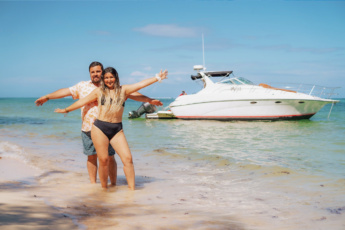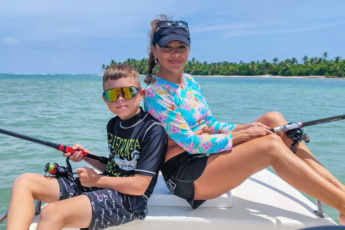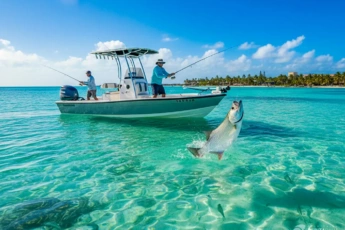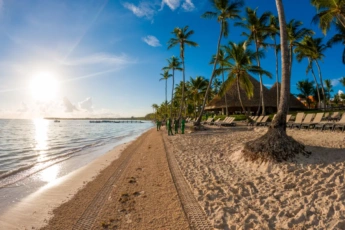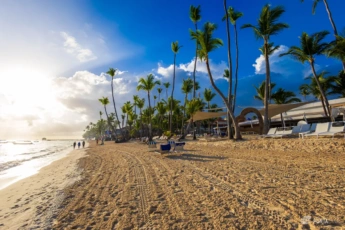Best Snorkeling in Punta Cana – Complete Guide 2025 with Top Spots, Safety Tips, & Tour Prices
Flippers and a mask are a must-have for nearly every water vacation. There’s a whole hidden world beneath the surface, from tranquil waters of little rivers to vibrant oceans. It’s not surprising that snorkeling has surged in popularity. This easy and accessible activity, derived from the German “Schnorchel” for breathing tube, requires minimal equipment and skill. Even children can enjoy the thrill of exploring underwater.
Snorkeling is an excellent option if you’re seeking affordable aquatic fun during your Punta Cana stay – with a mask on, the ocean is your playground!
Top Snorkeling Locations You Can Visit
from Punta Cana
While Punta Cana’s beaches are world-renowned, the underwater scenery offers different beauty. Cabeza de Toro and Bavaro Beach are popular choices for a casual snorkeling experience. However, if you’re looking for vibrant coral reefs and abundant marine life, consider a boat trip to the nearby islands of Saona and Catalina.
1. Saona Island
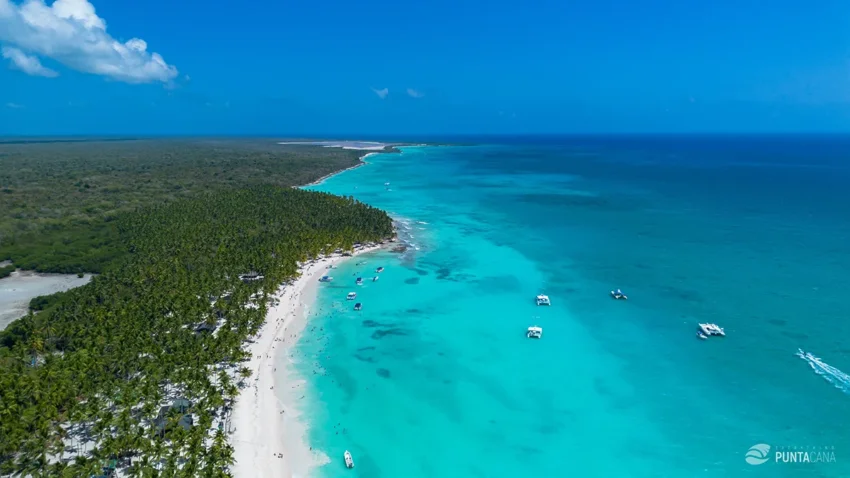
Saona Island
If you’re looking for an exceptional snorkeling experience, Saona Island is a must-visit. Located off the southeastern coast of the Dominican Republic, Saona Island is a protected national reserve. Its thriving coral reef is home to a captivating variety of creatures, including graceful stingrays, intriguing moray eels, and swift barracudas. The island offers a delightful underwater adventure for those looking to relax and enjoy the beauty of the Caribbean Sea.
What to expect:
- Beautiful coral reefs: You’ll see many different kinds of colorful coral and many types of fish, including sea turtles and dolphins.
- Lots of fish: You can see many tropical fish, like angelfish and butterflyfish. You might even see bigger animals like rays and sharks.
- Special swimming areas: Coral surrounds some cool natural pools. These are calm places where you can see sea creatures up close.
- Clear waters: Because the water is so clear, you can see everything underwater well. It’s like swimming in a giant aquarium!
While Saona Island is a year-round destination, the best time for snorkeling is during the dry season, from December to April. The waters are typically calmer and have better visibility, allowing for a more enjoyable snorkeling experience.
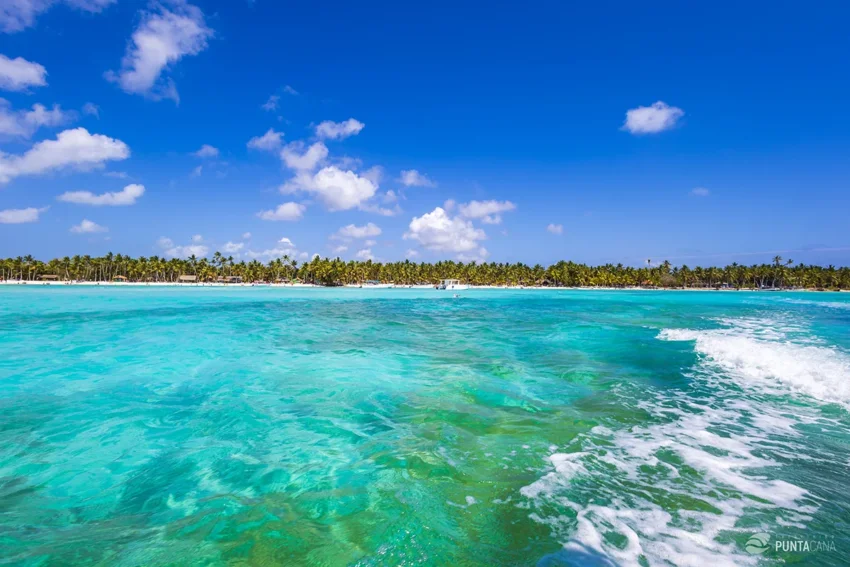
Saona Island
Spots that stand out:
While the entire island offers fantastic snorkeling opportunities, there are a few specific spots that stand out:
- Natural Pools: These are shallow, calm areas formed by coral reefs, offering a unique and peaceful snorkeling experience. You’ll often find a variety of starfish and small fish in these protected environments.
- The Channel Between Saona and Cat Island: This area is known for its strong currents, making it more suitable for experienced snorkelers. However, the reward is exceptional marine life, including larger fish species and potentially even sea turtles.
- The Coastline Surrounding Saona: The island’s coastline has numerous snorkeling spots. Explore the shallow reefs and sandbars, discovering hidden treasures at every turn.
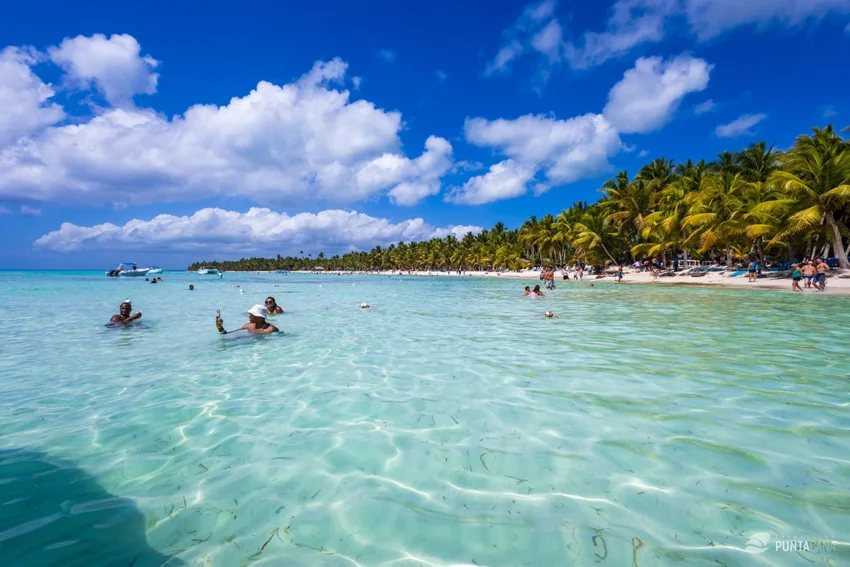
Saona Island natural pool
Here’s a glimpse of what you might encounter:
- Tropical fish: A dazzling array of colors and shapes, including angelfish, butterflyfish, parrotfish, and sergeant majors.
- Larger species: You might spot barracudas, jacks, and occasional grouper.
- Dolphins: These playful creatures are often seen frolicking in the waves near the island.
- Manatees: Although less common, there’s a chance you might encounter one of these gentle giants.
- Sea turtles: Look for graceful green sea turtles, which frequent the island’s waters.
- Starfish: Saona is famous for its starfish, though it’s important to admire them from a distance and not touch them.
- Stingrays: These creatures gracefully glide across the sandy bottom.
How much does it cost to go to Saona Island?
There’s a Saona Island tour for every type of traveler and budget. Prices can range quite a bit, from affordable group trips to luxurious private charters.
-
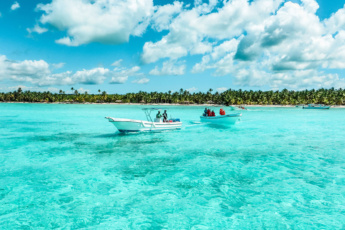
Isla Saona Boat Tour – Toro and Palmilla Beach & Natural Pool
from $149 View Details -
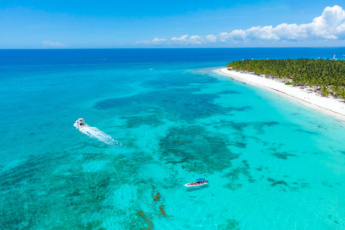
Private Isla Saona VIP Tour – Full-Day, Blue Lagoon, Snorkeling, Mangrove Forests
from $810 View Details -
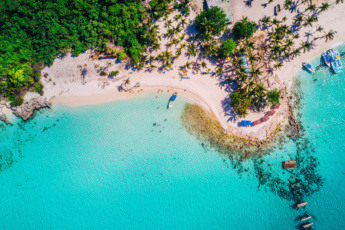
Saona Island Private Tour – From Punta Cana to Saona Excursion
from $1040 View Details -
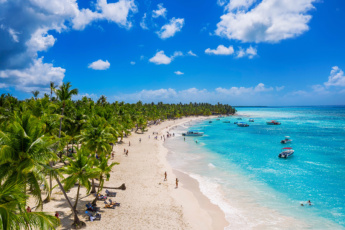
Saona Island Excursion – VIP Paradise
from $1250 View Details
Budget-friendly options:
If you’re looking to save money without sacrificing fun, you can find tours starting at $75, but tours with snorkeling starts from $149. These typically include transportation to and from your hotel, a boat ride to the island, a visit to the famous Blue Lagoon, and a traditional Dominican lunch with drinks.
It’s a great way to experience Saona Island without breaking the bank or snorkeling. However, if snorkeling is a priority, one of the more expensive tours would be the better option.
Mid-range options:
For a more personalized experience, consider a private tour. Prices for these start around $710. You’ll have your own boat, access to exclusive beaches, and the chance to snorkel in a beautiful reef. You’ll also visit the Blue Lagoon and enjoy a delicious lunch.
Luxury options:
If you want to treat yourself to a truly unforgettable experience, a luxury private tour is the way. Prices for these high-end packages start at $2,085. You’ll have your private catamaran, access to exclusive areas like the Natural Pool, and a gourmet lunch with unlimited drinks. It’s the perfect choice for celebrating a special occasion or simply indulging in a day of pure luxury.
Most Saona Island tours begin early, usually around 7:00 AM. Depending on your chosen tour, you can expect to spend 9 to 12 hours on the island. This gives you plenty of time to relax, explore, and enjoy everything Saona Island has to offer.
2. Catalina Island
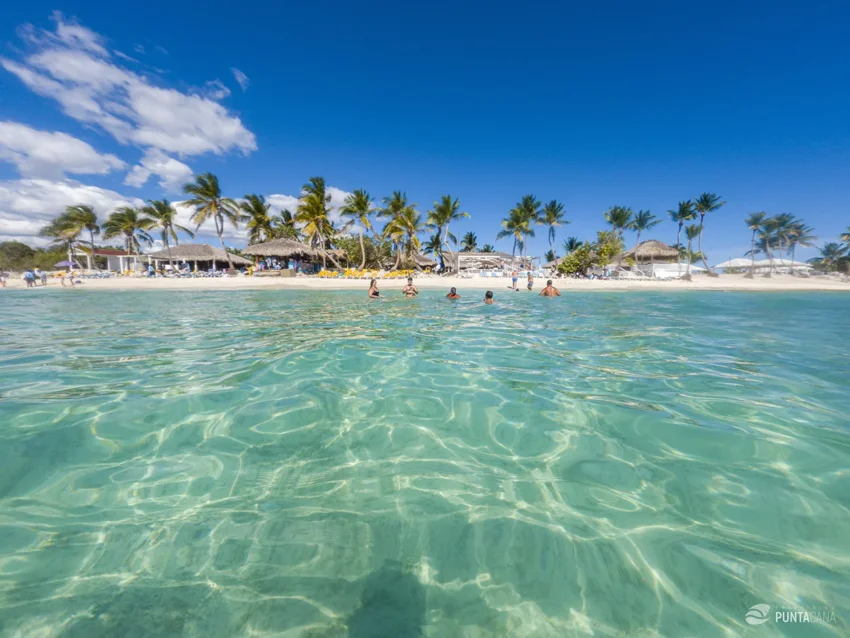
Catalina Island
Catalina Island is another prime snorkeling spot in the Dominican Republic, located near Punta Cana. The water along its shores is spotless and clear, with visibility up to 30 meters deep.
- One of the island’s most popular snorkeling spots is Casino Point Dive Park. This protected area boasts a vibrant ecosystem teeming with colorful fish, playful sea lions, and graceful kelp forests. Snorkelers of all levels can enjoy the underwater spectacle, from the shallow, sandy bottom to the deeper, kelp-filled areas.
- For a more secluded experience, head to Lover’s Cove Marine Preserve. This pristine cove is home to diverse marine creatures, including garibaldi, kelp bass, and bat rays. The calm waters and abundant sunlight make it an ideal spot for underwater photography.
- If you’re looking for adventure, consider exploring the waters around Two Harbors. This charming village offers access to some of the best snorkeling in the world. The clear visibility and diverse marine life make it a favorite among snorkelers and divers.
The best time to snorkel in Catalina Island is during summer when water temperatures are warmest. However, the island offers pleasant weather year-round, making it a suitable destination for snorkeling enthusiasts.
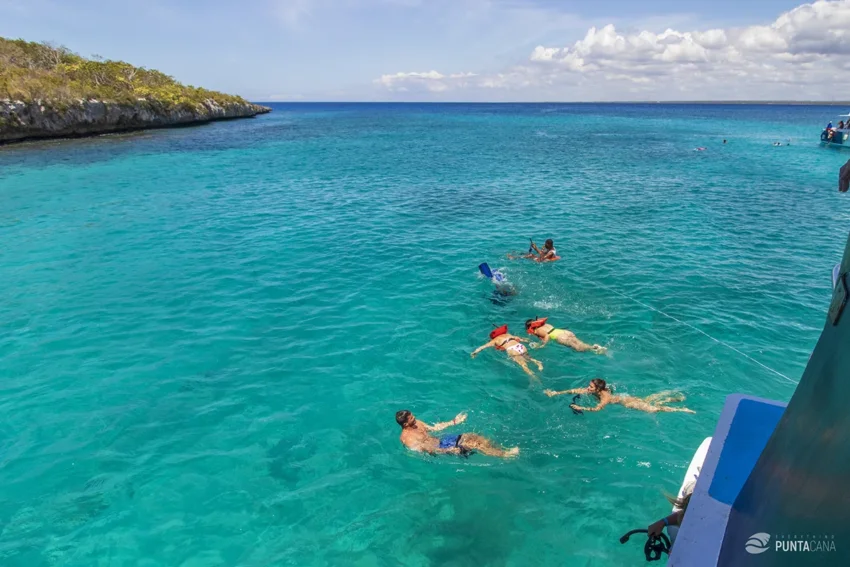
Snorkeling at Catalina Island
Catalina’s Marine Life
Catalina Island’s underwater world is a vibrant tapestry of marine life. Here are some of the fascinating creatures you might encounter while snorkeling:
Common sights:
- Garibaldi: California’s state marine fish, this bright orange beauty is a common and beloved sight.
- Opaleye: These curious fish often approach snorkelers, hoping for a handout.
- Kelpfish: Blending seamlessly with their kelp forest surroundings, these camouflaged creatures can be tricky to spot.
- Sea Lions: Playful and energetic, these charismatic mammals are a joy to watch.
- Bat Rays: Graceful and gentle giants glide effortlessly through the water.
Less common but exciting:
- Giant Black Sea Bass: A true underwater behemoth, these rare and protected fish are a sight to behold.
- Moray Eels: With their snake-like bodies, these creatures can be intimidating but are generally harmless.
- Leopard Sharks: These spotted sharks are more interested in hunting for small prey than humans.
- Horn Sharks: With their distinctive horn-like projections, these slow-moving sharks are harmless to humans.
- Remember, this is just a small sample of the diverse marine life you might encounter. Every snorkeling adventure is a chance to discover new and exciting creatures.
How much does it cost to go to Catalina Island?
Catalina Island offers a variety of tours to suit different budgets and preferences. Prices range from affordable day trips to luxurious private yacht charters.
For around $85, you can enjoy a full-day excursion that includes snorkeling at the famous “The Wall.” These tours typically involve a large group but offer good value with included transportation, lunch, and drinks. Be prepared for a busy day, and remember to protect yourself from the sun.
-
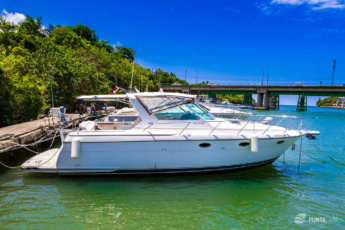
Luxury Private Yacht Charters from Punta Cana – 8 Hour Tour on Sugar Yacht to with Snorkeling (Catalina Island)
from $1688 View Details -

Punta Cana Private Yacht Charter – Cruise on Ancoral Luxury Yacht to Saona, Catalina & Palmilla
from $3938 View Details -
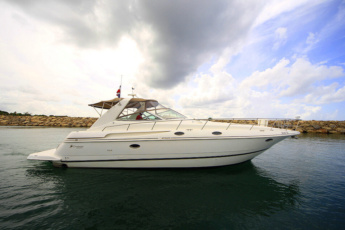
Private Boat Rental in Punta Cana – Champagne Girl Private VIP Boat (Tours to Catalina, Saona, Palmilla)
from $2094 View Details -
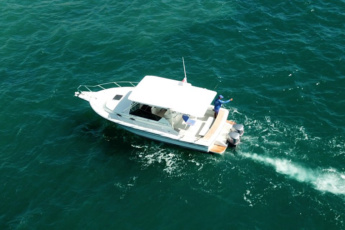
Private Boat Trip in Punta Cana on Scorpio Boat – Ideal for Small Groups (6 Guests)
from $1500 View Details -
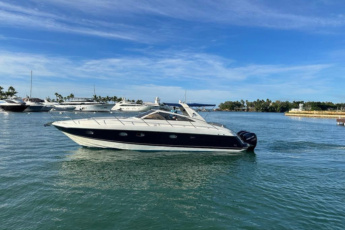
Punta Cana Private Yacht Charter – Luxury 43-ft Yacht Lady V – Trips to Saona, Catalina, Palmilla
from $2125 View Details -
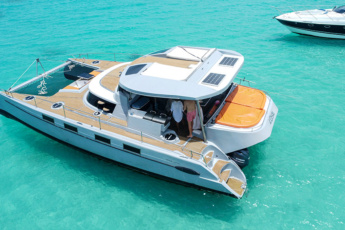
Private Catamaran Charters in Punta Cana – Full-Day Island Trips to Saona or Catalina with Snorkeling
from $3250 View Details
For a more personalized experience, consider a mid-range tour priced around $740. These tours often include private boat transport, a dedicated guide, and a more intimate snorkeling experience. You’ll enjoy more comfort and service than the budget option.
If you want to splurge, a private yacht charter for about $1,795 offers the ultimate luxury experience. Enjoy exclusive access to the island, gourmet food, and top-notch amenities.
Most trips to Catalina Island are full-day adventures, lasting around 9-10 hours. These tours typically start early, around 7 or 8 AM, with pickup from your hotel. The day is packed with activities like snorkeling, swimming, and exploring the island before returning late afternoon.
3. Cabeza de Toro
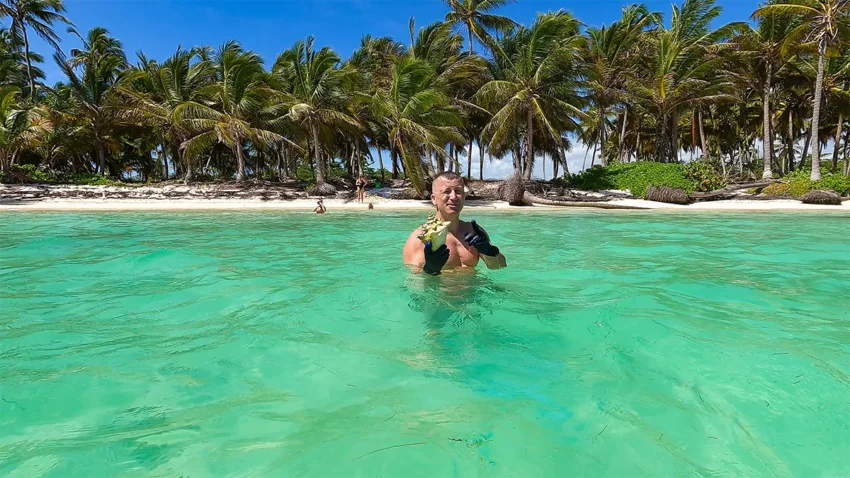
Cabeza de Toro
Snorkeling at Cabeza de Toro Beach is decent, but it’s not the standout marine life experience you might find in other parts of the Dominican Republic. While the water is clear and calm in many areas, the underwater world is relatively simple compared to what you’ll encounter in places like Catalina Island or Saona Island.
If you’re staying in the Cabeza de Toro area and looking for a quick and easy snorkeling option, the beach offers some opportunities to spot colorful fish and a small coral reef. However, you’ll want to consider a day trip to Catalina Island or Saona Island for a genuinely unforgettable snorkeling adventure.
While Cabeza de Toro might not be the top-tier snorkeling destination in the Dominican Republic, it does offer some perks:
- Accessible Reefs: There are some small coral formations and various colorful fish to spot, making it an enjoyable experience for casual snorkelers.
- Relaxing Atmosphere: Snorkeling at Cabeza de Toro can be a relaxing afternoon, especially if you’re not looking for an intense marine life encounter.
- Convenience: If you’re staying in the area, getting your feet wet is a quick and easy option.
- Calm Waters: The waters are often ideal for beginners or families with children, as they tend to be quiet and shallow.
Can You Snorkel on Bavaro Beach?
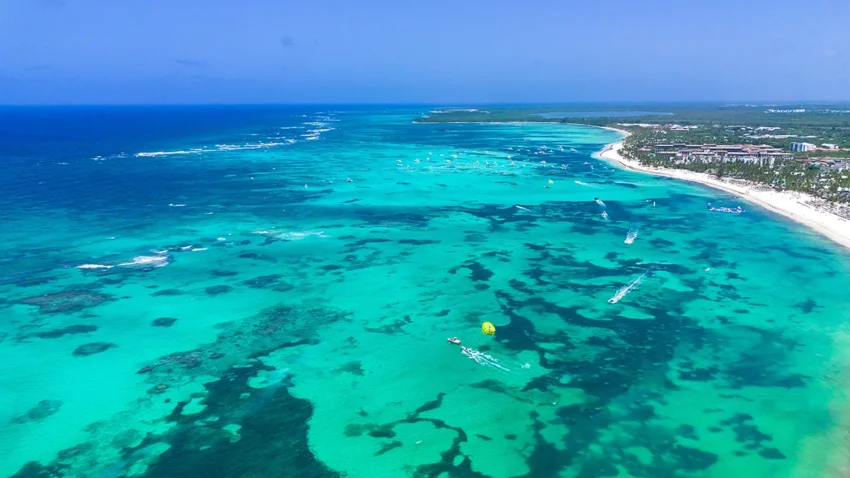
Bávaro Beach
While Bavaro Beach is a postcard-perfect destination, renowned for its soft sands and crystalline waters, snorkeling directly off Bavaro Beach is generally underwhelming. The water is clear and inviting, but the marine life is relatively sparse due to factors like boat traffic and the sandy seabed. You might see a few colorful fish but don’t expect the vibrant coral reefs and abundant marine creatures.
That being said, Bavaro Beach is a fantastic base for exploring better snorkeling spots like Saona and Catalina Islands. Tour operators offer excursions to nearby reefs and islands, where the underwater world comes alive.
However, scattered reefs just offshore offer a unique underwater experience. Although not teeming with the same vibrant marine life as other locations, these reefs provide a fascinating glimpse into the ocean’s ecosystem. For kids armed with a snorkel mask, it’s a captivating way to spend a lazy afternoon.
Snorkeling isn’t just about seeing fish. It’s about discovering a whole new world, observing the interplay of light and water, and feeling a sense of wonder. And while Bavaro Beach might not be the ultimate snorkeling destination, it offers a delightful introduction to the underwater realm.
-
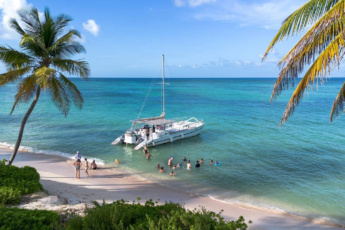
Catamaran Tour in Punta Cana (Bavaro) – Party, Sailing & Snorkelling Experience 2025
from $75 View Details -
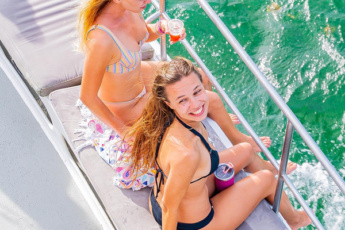
Power Adventures Full Package – “Bad Girl” Catamaran Cruise with Snorkeling, Hookah Diving, Parasailing & Party
from $160 View Details -
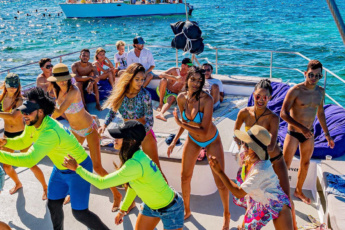
Punta Cana Private Bad Girl Catamaran Tour Along the Bávaro Beach – Party, Open Bar, Snorkelling
from $595 View Details -
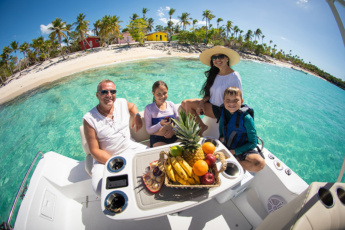
Best Private Punta Cana Snorkeling Tour – 3 Hours, Best Spots, Small Group, Equipment
from $430 View Details -
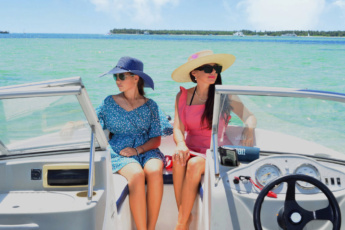
3-Hour Private Speed Boat Punta Cana Tour – Bavaro Coastline, Snorkelling, Natural Pool & Secluded Beach
from $270 View Details -
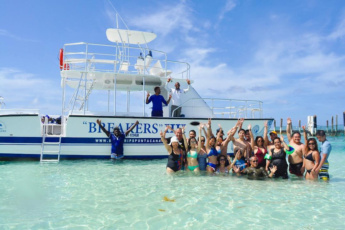
Private Catamaran in Punta Cana (Bavaro) – Exclusive Snorkel & Sail Adventure 2025
from $765 View Details -
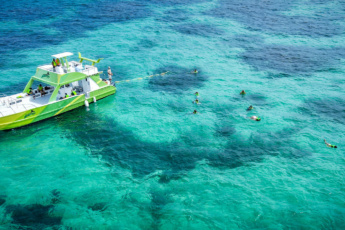
New Private Catamaran Tour in Punta Cana, Bávaro 2025 – Snorkelling, Entertainment, Open Bar
from $1335 View Details -
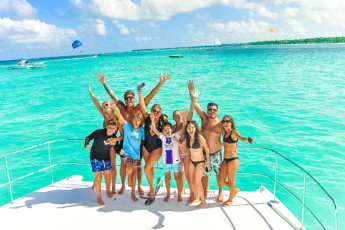
Private VIP Catamaran Tour in Punta Cana – New Excursion with Open Bar, Snorkelling, Animation
from $1935 View Details -
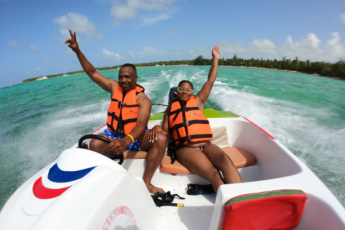
Punta Cana Speed Boat and Snorkeling Tour – Self-drive 2-hour excursion up to 4 people
from $85 View Details -
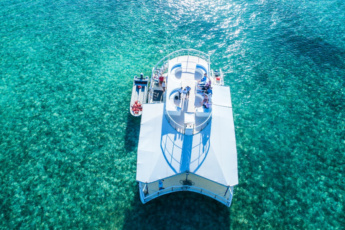
5-Hour Private Punta Cana Catamaran Tour – VIP Cruise with Sunset Dinner, Snorkeling and DJ
from $5300 View Details -
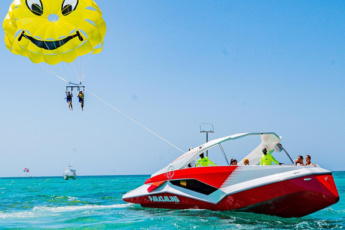
Best Parasailing in Punta Cana, Bávaro – 3-in-1 Combo: Parasailing, Snorkeling, Catamaran Sailing
from $140 View Details -
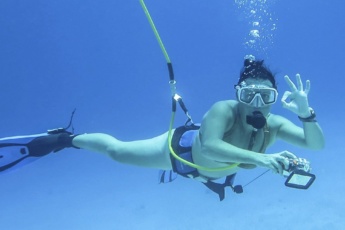
Best Snorkeling & Diving in Punta Cana – Sailing Catamaran Cruise
from $120 View Details -
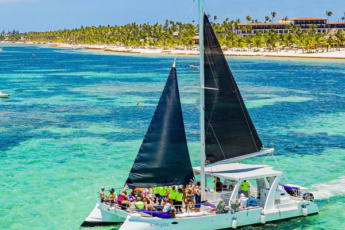
Power Cruise – Punta Cana Party Experience on the Bad Girl Catamaran
from $65 View Details
What Fish Do You See Snorkeling
in Punta Cana?
Punta Cana offers a vibrant underwater ecosystem, perfect for snorkeling enthusiasts. You can expect to encounter a dazzling array of fascinating creatures, including:
- Parrotfish: These colorful fish are known for their distinctive beaks, which they use to scrape algae off coral.
- Angelfish: With their striking colors and graceful movements, angelfish are a famous sight for snorkelers.
- Stingrays: While not fish, these graceful creatures are often spotted gliding along the sandy bottom.
- Trumpetfish: These elongated fish are masters of camouflage and can be challenging to spot.
- Blue Tang: Known for their vibrant blue color, these fish are a favorite among snorkelers and divers.
- Sea turtles: These gentle giants are often seen grazing on seagrass.
- Lobsters: While often hiding in crevices, you might glimpse these crustaceans.
- Barracudas: These sleek predators are often misunderstood and are generally harmless to humans.
- Moray eels: These eel-like fish can be intimidating but are usually shy and pose no threat.
- Octopus: These intelligent creatures are masters of camouflage and can be challenging to spot.
- Various species of colorful coral: Punta Cana boasts a diverse coral reef ecosystem, home to numerous marine organisms.
Remember: Marine life is sensitive, so please practice responsible snorkeling by avoiding touching or disturbing the coral and marine creatures.
Choose the Right Equipment for Snorkeling
1. Selecting the perfect mask
The optimal snorkeling mask is often called a “flat mask.” This design employs a single piece of glass positioned directly in front of your eyes, maximizing your field of view. Flat masks offer a wider underwater perspective than traditional masks that create a gap between your eyes and the glass.
Another crucial factor is the mask’s silicone skirt. While initially appealing, transparent silicone tends to yellow over time, diminishing the mask’s appearance. On the other hand, black silicone is more durable and resistant to discoloration, making it a practical choice.
Press the mask to your face and inhale gently to ensure a proper fit. A well-sealed mask will adhere to your skin without allowing air to enter. Anti-fog solutions or techniques can prevent fogging.
While countless mask options exist, several high-quality flat masks stand out. Brands like Mares and Cressi offer excellent choices, such as the Beuchat Maxlux, Beuchat Super Compensator, and Scubapro Frameless. These masks combine optimal visibility with comfortable fit and durability.
2. Choosing the proper snorkel
The snorkel is equally crucial for an enjoyable snorkeling experience. Basic non-valved snorkels, like the Cressi Sub Corsica, are simple and effective. Single or dual-valve options offer additional protection against water entry. However, valves can be prone to issues if sand gets inside. For surface swimming, consider snorkels with a top valve, dual-valve, or splash guards, such as the Cressi Sub Mexico or Marlin Dry Max. Underwater hunters and freedivers often prefer simple, non-valved snorkels.
3. Choosing the right fins for snorkeling
Investing in a pair of fins can significantly enhance your experience as your snorkeling adventures deepen. Fins propel you effortlessly over longer distances, making exploration more enjoyable.
Snorkeling fins typically consist of a blade and a foot pocket. For optimal snorkeling, opt for medium-sized blades. Longer blades, often favored by divers and freedivers, can be tiring for surface swimming due to increased drag. To maximize efficiency, look for fins with features like longitudinal inserts (e.g., Seac Sub Fuga) or edge flanges (e.g., Cressi Sub Reaction Pro).These design elements reduce water resistance and improve propulsion.
Closed-heel fins offer superior foot security and energy transfer. Prioritize comfort by selecting soft, flexible foot pockets. While open-heel fins provide an adjustable fit, they often compromise foot security and are susceptible to strap breakage. For convenient transport, consider a dedicated fin bag.
This covers the essential equipment needed for snorkeling, which includes a mask, snorkel, and fins. To make the snorkeling experience more exciting and memorable, consider bringing along a camera or an action camera, some of which can be integrated into specific mask models. This setup allows you to enjoy the underwater world and capture its beauty for lasting memories.
4. Advanced Snorkel gears and tips
In addition to a mask and snorkel, other items can enhance your snorkeling experience.
- Wetsuits can keep you warm and protected from the sun and jellyfish. A thickness of 1.5 to 3 millimeters is usually enough for snorkeling.
- Gloves and boots provide extra protection for your hands and feet. Look for gloves with reinforced palms for better grip.
- A weight belt can help you sink more quickly if you want to explore deeper waters.
- A snorkeling bag is handy for carrying and storing your gear.
- Consider a waterproof camera or a waterproof case for your phone to capture your underwater adventures.
With the right gear and knowledge, you’ll be well-prepared for a fantastic snorkeling adventure!
Show all ↓
Snorkeling Safety and Etiquette
in the Dominican Republic
- Always snorkel with a buddy. This is crucial in case of emergencies.
- Learn how to equalize pressure in your ears to prevent discomfort.
- Stay hydrated. The sun and physical activity can dehydrate you quickly.
- Protect your skin with reef-safe sunscreen to safeguard yourself and the marine ecosystem.
- Avoid touching or feeding marine life. This can disrupt their natural behavior and harm them.
- Be mindful of your surroundings. Avoid damaging coral reefs or disturbing the seabed.
- Pack out what you bring in: Don’t leave any trash behind.
Conclusion
With spots like Cabeza de Toro Beach and the nearby islands of Saona and Catalina, there’s something for everyone, from beginners to experienced snorkelers. You’ll be amazed by the colorful fish, graceful stingrays, and maybe even a curious octopus. The coral reefs are beautiful, and it’s great to know that places like Cabeza de Toro are working hard to protect them.
Whether you snorkel right from the beach or take a boat tour, you’re in for a treat. The water is crystal clear and there’s so much to see. It’s important to be careful and respectful of the underwater world. Joining a guided tour is a great way to learn about the marine life and help protect it.
So, get ready to explore a magical underwater world! Punta Cana’s snorkeling is an unforgettable experience that combines adventure, beauty, and education.
Frequently Asked Questions about
Snorkeling in Punta Cana
What are the best times of the year for snorkeling in Punta Cana?
The best time for snorkeling in Punta Cana is during the dry season, from December to April. The water is calmer, clearer, and offers better visibility for observing marine life.
Is snorkeling suitable for beginners or children?
Absolutely! Snorkeling is a beginner-friendly activity that can be enjoyed by people of all ages, including children. The calm waters in many areas make it ideal for families.
What is the typical visibility underwater in Punta Cana?
Visibility varies depending on the location. Generally, the waters around Punta Cana offer good visibility, up to 30 m.
What kind of marine life can I expect to see while snorkeling?
You can encounter diverse marine life, including colorful tropical fish, coral reefs, sea turtles, stingrays, and even dolphins and manatees in certain areas.
Is there a coral reef in Punta Cana?
Punta Cana is actually home to the longest coral reef in the Dominican Republic. While it might not be as renowned as other Caribbean destinations for its coral reefs, it still offers some fantastic snorkeling opportunities.
You can find coral reefs closer to the shore in areas like Cabeza de Toro, and there are also more extensive reefs accessible by boat tours to nearby islands like Saona and Catalina.
Can you snorkel on Bavaro Beach?
While snorkeling directly from Bavaro Beach is possible, the marine life is relatively sparse. However, there are scattered reefs just offshore that offer a more interesting underwater experience. For the best snorkeling, consider taking a boat trip to nearby islands or reefs.
Are snorkeling tours worth it?
Snorkeling tours often take you to the best spots, provide equipment, and offer expert guidance. They can definitely enhance your experience.
Is the ocean swimmable in Punta Cana?
Generally, yes. The Caribbean side of Punta Cana boasts calm, clear waters ideal for swimming.
What is the best way to reach the snorkeling spots in Punta Cana?
Most snorkeling spots in Punta Cana require a boat trip. Many hotels and tour operators offer excursions to Saona and Catalina Islands. You can also arrange private boat tours for a more personalized experience.
What snorkeling equipment should I bring or rent?
Essential snorkeling equipment includes a mask, snorkel, and fins. You can rent equipment at most resorts and tour operators. Consider bringing or renting a wetsuit for added comfort and warmth, especially if you’re snorkeling in cooler waters.
Are there any safety precautions I should follow while snorkeling?
Always snorkel with a buddy, respect marine life, avoid touching or feeding animals, and be mindful of your surroundings. Learn how to equalize pressure in your ears to prevent discomfort. It’s also advisable to wear sunscreen and a rash guard to protect your skin.
Can you snorkel off the beach in the Dominican Republic?
While some areas offer decent snorkeling directly from the beach, like Cabeze de Toro Beach in Punta Cana, many of the best spots require a boat trip.
How much does it cost to snorkel in Punta Cana?
Prices vary depending on the tour, but you can expect to pay anywhere from $70 to $1500 for luxury trip per person.
What part of Punta Cana has the clearest water?
The areas with the clearest water are typically found near coral reefs, such as Cabeza de Toro Nature Reserve and the offshore islands of Saona and Catalina.
Which beach has the best snorkeling in Punta Cana?
Cabeza de Toro is often cited as a good option for beach snorkeling, but for the best experience, consider a boat tour to offshore reefs.
What is the difference between snorkeling in Saona and Catalina Islands?
Saona and Catalina Islands offer excellent snorkeling opportunities but have different characteristics. Saona Island is known for its natural pools and abundant marine life, while Catalina Island is famous for its clear waters and diverse ecosystem, including kelp forests and sea lions.
Updated on: . Author:

